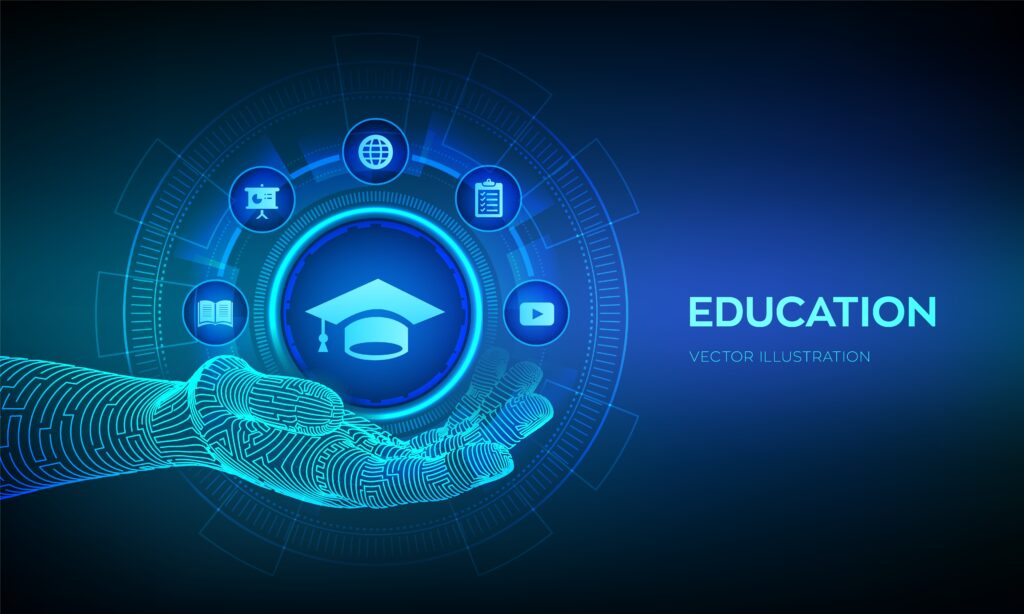In an time characterized by quick mechanical progressions, educational innovation (EdTech) has developed as a transformative constrain reshaping the scene of learning. By mixing imaginative instruments, stages, and strategies, EdTech upgrades instructing and learning encounters, clearing the way for more available, personalized, and productive education frameworks. This article investigates the scope of educational technology, diving into its current affect, potential development, and the openings it offers for understudies, teachers, and educate worldwide. What is the Scope of Educational Technology
Understanding Instructive Technology
Educational innovation envelops a wide run of devices and hones planned to make strides the conveyance, availability, and quality of instruction. From conventional classroom settings to online learning stages, EdTech coordinating computerized devices like intelligently program, virtual reality (VR), manufactured insights (AI), and cloud-based arrangements to make energetic learning environments.
Key illustrations of EdTech instruments include:
Learning Administration Frameworks (LMS): Stages like Moodle, Chalkboard, and Google Classroom streamline course conveyance and assessment.
Virtual and Increased Reality (VR/AR): These innovations offer immersive encounters, making complex concepts simpler to understand.
AI-Powered Arrangements: Apparatuses such as personalized mentoring frameworks and computerized evaluating improve proficiency and cater to person learner needs.
Gamification: Coordination amusement mechanics into instructive substance to boost engagement and retention.
Mobile Learning Apps: Apps like Duolingo, Coursera, and Khan Institute give adaptable, on-the-go learning opportunities.
The Extending Scope of Instructive Technology
- Improving Accessibility
One of the most noteworthy commitments of EdTech is its capacity to break down obstructions to instruction. Online stages and computerized devices make learning open to individuals in inaccessible ranges, underserved communities, and those with inabilities. For instance:
Global Reach: MOOCs (Gigantic Open Online Courses) like edX and Udemy interface learners worldwide.
Assistive Advances: Devices such as screen perusers, voice acknowledgment computer program, and versatile consoles enable learners with disabilities.
- Personalized Learning
EdTech empowers custom fitted learning encounters that adjust to person students’ needs, inclinations, and advance. Versatile learning frameworks fueled by AI analyze execution information to give customized substance and criticism. This approach cultivates way better comprehension and maintenance, particularly for assorted learning styles.
- Changing Conventional Classrooms
Blended learning models combine face-to-face instruction with computerized assets, making half breed classrooms that maximize engagement and adaptability. Intuitively whiteboards, online tests, and advanced reading material improve conventional instructing strategies, making lessons more locks in and effective.
- Proficient Advancement for Educators
Teachers advantage from EdTech through assets like online preparing programs, peer collaboration stages, and virtual workshops. These devices empower teachers to remain overhauled on educational patterns and move forward their educating skills.
- Cultivating Deep rooted Learning
Educational innovation bolsters ceaseless learning by advertising assets past formal instruction. Experts can upskill through online certifications, whereas specialists can investigate modern interface through stages like Skillshare and MasterClass.
Emerging Patterns in Instructive Technology
- Fake Insights (AI) and Machine Learning
AI is revolutionizing instruction by robotizing regulatory errands, empowering prescient analytics, and making shrewdly coaching frameworks. AI-driven stages can:
Identify learning crevices and propose custom-made interventions.
Automate evaluating and appraisal, sparing teachers time.
Offer real-time analytics to track understudy progress.
- Virtual Reality (VR) and Increased Reality (AR)
Immersive innovations like VR and AR are changing the way understudies associated with instructive substance. For example:
Medical understudies can hone surgical strategies in virtual environments.
History lessons come lively through virtual visits of verifiable sites.
AR apps overlay advanced data onto real-world settings, upgrading hands-on learning.
- Gamification
Gamification joins diversion components into learning, such as focuses, leaderboards, and challenges. This approach propels understudies by making learning fun and competitive, especially in zones like STEM education.
- Blockchain in Education
Blockchain innovation guarantees secure, straightforward record-keeping for accreditations, transcripts, and certifications. It streamlines confirmation forms and combats credential fraud.
- 5G and Connectivity
Faster web speeds through 5G innovation improve the conveyance of online instruction, empowering consistent video spilling, real-time intelligent, and get to to high-quality computerized content.
The Benefits of Instructive Technology
Increased Engagement: Intelligently substance, gamification, and interactive media components charm learners, making instruction enjoyable.
Flexibility: Understudies can learn at their claim pace, from anyplace, at any time.
Cost-Effectiveness: Advanced devices diminish the require for physical assets like reading material and classroom infrastructure.
Data-Driven Experiences: Analytics instruments offer assistance teachers track execution, distinguish patterns, and refine educating strategies.
Collaboration Openings: Online stages interface learners and teachers universally, cultivating collaboration and information sharing.
Challenges and Solutions
- Advanced Divide
Access to innovation changes over districts, making abberations in instructive openings. Arrangements include:
Government activities to give reasonable web and devices.
Public-private associations to create foundation in underserved areas.
- Instructor Training
Not all teachers are capable at utilizing innovation. Preparing programs and user-friendly devices can bridge this crevice, engaging instructors to coordinated EdTech effectively.
- Information Protection and Security
With the rise of advanced stages, defending understudy information is basic. Teach must actualize strong cybersecurity measures and comply with directions like GDPR and FERPA.
- Overdependence on Technology
While innovation improves learning, overreliance can reduce basic considering and interpersonal aptitudes. A adjusted approach combining advanced and conventional strategies is essential.
Future Prospects of Instructive Technology
The future of EdTech is promising, with continuous headways in AI, VR, and other innovations forming inventive learning encounters. Key improvements to observe include:
AI-Powered Mentorship: Personalized direction custom-made to person career aspirations.
Smart Campuses: IoT-enabled campuses advertising consistent, associated learning environments.
Universal Get to: Activities to bridge the advanced partition, guaranteeing evenhanded get to to instruction for all.
Conclusion
The scope of instructive innovation is tremendous and ever-expanding, driving noteworthy progressions in how we instruct, learn, and develop. By grasping EdTech, teachers and educate can make comprehensive, locks in, and compelling learning situations that cater to the assorted needs of advanced learners. As innovation proceeds to advance, its potential to revolutionize instruction remains boundless, advertising openings for a brighter, more associated future.





